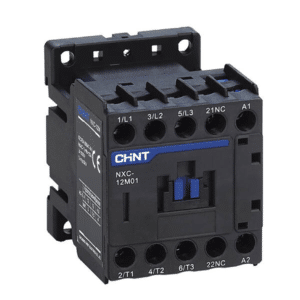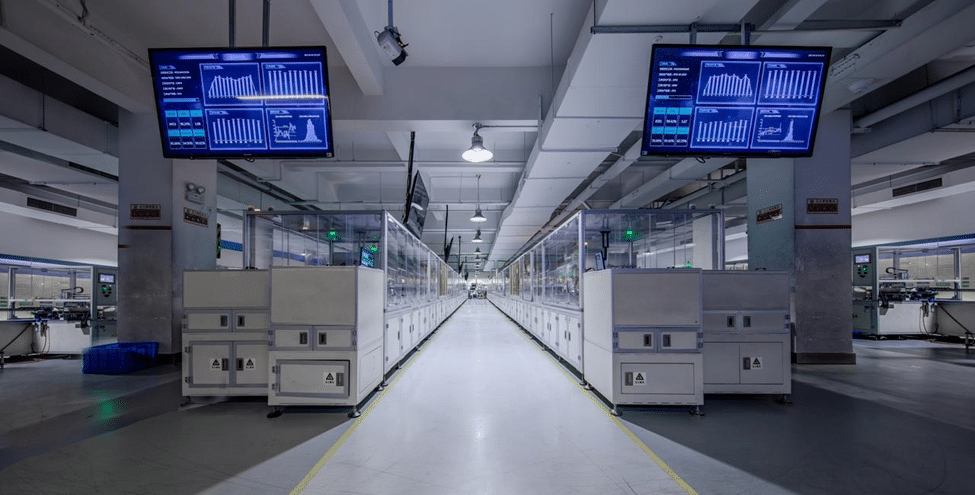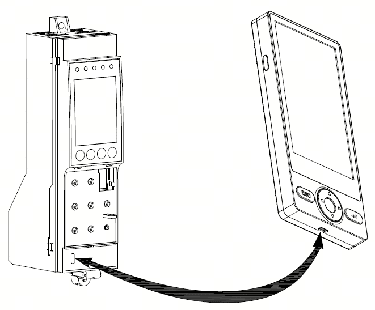Table of Contents
AC Contactors, widely used in industrial applications to allow electrical equipment and loads to be switched on and off automatically, play a vital role in manufacturing by facilitating remote or automatic control of electrical loads in machine tools, assembly lines, HVAC systems, and other automated processes. An AC contactor digital workshop is an intelligent manufacturing project. Through multiple automated production lines integrated with digital technologies like MES, WMS, etc., the workshop fully automates and digitizes AC contactor manufacturing.
What are AC Contactors
An AC contactor is an electrically controlled switch for switching an electrical power circuit, similar to a relay but with higher current ratings. It functions by closing or opening contacts to supply power to a circuit when commanded by a signal from a controller or operator.
Contactors are widely used in industrial equipment, given their capacity to handle higher power loads than relays. They are heavily used in rotating machines, assembly lines, elevators, wind turbines, and other applications requiring remote or automatic control of electrical loads.
Exploring the Components of AC Contactors
The multiple main components of an AC contactor work together to enable robust power switching performance. These include:
1. Contact Support Assembly: Core Component and Functionality
This assembly forms the core of the AC contactor and includes the movable and fixed contacts that physically open and close the circuit. Precision manufacturing is crucial for long-life, reliable operations. The contacts must withstand high currents and millions of operations without degradation.
2. Base Assembly: Structural Foundation and Integration
Acting as the structural foundation, the base assembly houses the electrical components securely and allows integration with external control circuits via terminals. Robust insulating materials isolate live parts for operator safety.
3. Coil and Screw Tightening: Ensuring Secure Connections
The electromagnetic coil allows for remote actuation via a control signal while tightening screws ensure durable connections between coil and base assembly.
4. Cover and Contact Plate: Protection and Circuit Control
These provide protective enclosures for the live contacts and other contactor parts and functions, with the contact plate facilitating the mounting of input/output terminals. Flame-retardant and chemically resistant materials shield operators from hazards.
5. Screw Tightening and Testing: Quality Assurance Measures
Strict quality control checks like automatic screw testing and contact resistance measurement happen to verify AC contactor integrity before shipment. Parameter tests confirm operational performance under simulated industrial conditions.

The Production Process in the AC Contactor Digital Workshop
CHINT’s automated production lines at the digital workshop exemplify advanced, digitized manufacturing capabilities.
The seasoned contactor manufacturer CHINT leverages seven automated production lines housed in a new smart manufacturing facility. The lines utilize modular platforms that can produce multiple AC contactor series through flexible reconfiguration within minutes, allowing fast response to changing market demands. State-of-the-art robotic workstations complement traditional manufacturing methods to achieve high precision and throughput.
CHINT’s Manufacturing Execution System (MES) oversees real-time monitoring and optimization of production flow across lines. Meanwhile, the Warehouse Management System (WMS) and Automated Guided Vehicles (AGVs) autonomously deliver parts and completed products between warehouses and lines for just-in-time manufacturing, streamlining material flows.
▸ Detailed Processes in Manufacturing
Manufacturing contractors involves precise assembly and testing of various components. CHINT’s automated lines illustrate advanced techniques for composite production. Processes include assembly, testing, and packaging.
1. Assembly Stage:
- Contact Support Assembly Unit: This unit utilizes mechanical clamping to assemble the contact bridge and employs technologies such as fiber optic detection and CCD inspection for quality control.
- Base Assembly Unit: This unit assembles the spring plates and armatures into components and fits them into the base. It utilizes electrostatic ionization technology for clean production.
- Robotic Feeding Unit: Utilizes a six-axis robotic arm to feed bases and pedestals.
- Pedestal Assembly Unit: This unit assembles cross pins, support components, and yokes into the pedestal, employing vacuum negative pressure technology for material supply.
- Coil Screw Assembly Unit: Utilizes a cam divider for feeding and employs vacuum negative pressure technology for the automatic assembly of screws.
- Composite Assembly Unit: Solves the alignment issue of composite assembly through “self-centering micro-positioning technology.”
- Contact Plate Assembly Unit: This unit utilizes automatic transfer technology to install contact plates into products and employs sensor technology for product detection.
- Combination Screw Assembly Unit: Utilizes servo systems to output real-time tightening torque, ensuring that the torque of the product’s combination screws falls within the standard range.
- Automatic Labeling Unit: This unit utilizes “three codes in one” technology to generate product barcodes, box labels, and carton labels online. Additionally, it adds a QR code for product information queries.
2. Testing Stage:
Different modes are available for packaging, enabling mixed-flow packaging of products with different models and specifications. After packaging is complete, operators use handheld PDAs for barcode scanning and grouping operations. Upon inspectors’ confirmation of inspection, the system interfaces with the finished product AGV for automatic product storage.
▸ CHINT’s Major Achievements and Innovations in Production
CHINT’s production innovations have significantly improved key metrics driven by computer-integrated manufacturing techniques. These advancements have unlocked new levels of quality, output consistency, and efficiency. Efficiency and productivity have been substantially boosted through dedicated material supply systems and dynamic line balancing algorithms, resulting in optimized throughput and minimized downtime, thus maximizing yields.
Quality control measures have been enhanced through robotic assembly combined with automatic inline measurement, ensuring tight tolerances and enhancing reliability. Integrated quality control loops have effectively eliminated variability. Additionally, the integration of CCD detection for quality assurance has enabled computer vision systems to conduct dimensional inspections, further bolstering quality assurance efforts.
Conclusion
Contactors continue to play a crucial role in industrial automation by reliably controlling electrical circuits. Both AC contactor components and manufacturing processes are advancing with new technologies that improve performance while reducing size and costs. Going forward, new contact materials, refined coil designs, and intelligence features will improve performance while reducing size.
A leader in these innovations, CHINT exemplifies automated and data-driven production through our AC Contactor Digital Workshop. With years of experience across several countries focusing on industrialization, internationalization, digitization, and low-carbon goals, CHINT provides a one-stop energy solutions platform and is well-positioned to drive further advancements. You can explore our website for more information.
Post Views: 495








